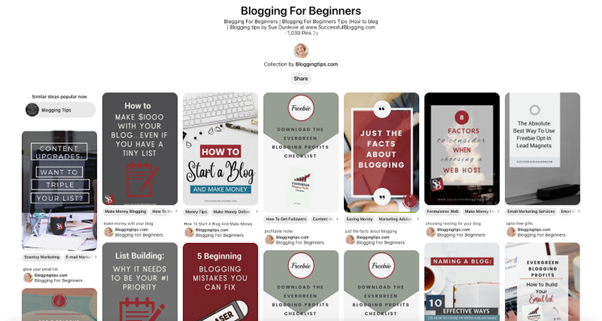MENU
Starting a Business
- Best Small Business Loans
- Best Business Internet Service
- Best Online Payroll Service
- Best Business Phone Systems
Our Top Picks
- OnPay Payroll Review
- ADP Payroll Review
- Ooma Office Review
- RingCentral Review
Our In-Depth Reviews
Finance
- Best Accounting Software
- Best Merchant Services Providers
- Best Credit Card Processors
- Best Mobile Credit Card Processors
Our Top Picks
- Clover Review
- Merchant One Review
- QuickBooks Online Review
- Xero Accounting Review
Our In-Depth Reviews
- Accounting
- Finances
- Financial Solutions
- Funding
Explore More
Human Resources
- Best Human Resources Outsourcing Services
- Best Time and Attendance Software
- Best PEO Services
- Best Business Employee Retirement Plans
Our Top Picks
- Bambee Review
- Rippling HR Software Review
- TriNet Review
- Gusto Payroll Review
Our In-Depth Reviews
- Employees
- HR Solutions
- Hiring
- Managing
Explore More
Marketing and Sales
- Best Text Message Marketing Services
- Best CRM Software
- Best Email Marketing Services
- Best Website Builders
Our Top Picks
- Textedly Review
- Salesforce Review
- EZ Texting Review
- Textline Review
Our In-Depth Reviews
Technology
- Best GPS Fleet Management Software
- Best POS Systems
- Best Employee Monitoring Software
- Best Document Management Software
Our Top Picks
- Verizon Connect Fleet GPS Review
- Zoom Review
- Samsara Review
- Zoho CRM Review
Our In-Depth Reviews
Business Basics
- 4 Simple Steps to Valuing Your Small Business
- How to Write a Business Growth Plan
- 12 Business Skills You Need to Master
- How to Start a One-Person Business
Our Top Picks
No Need for Reinvention: 10 Ways to Repurpose Your Blog Content for More Traffic

Table of Contents
Many businesses feel pressured to produce a constant flow of social media content and website material to engage users and improve search engine rankings. Older blog posts may be a rich content source if you refresh and repurpose them. In fact, top marketing experts, like Neil Patel and Brian Dean, use repurposing tactics to save time, drive more website traffic and provide value to visitors.
We’ll explore 10 tactics for recycling blog content and explain the benefits of refreshing and repurposing.
10 great ways to recycle blog content
Recycling blogs helps you reach audiences that missed your content the first time around and gives you a chance to improve your content’s depth and accuracy.
Here are 10 excellent ways to recycle older blog posts.
1. Expand a popular blog post into a two-parter.
You may have a popular blog post that garners questions and comments while prompting discussion and engagement. Examine your feedback and consider if your readers would appreciate additional information not covered in the post.
If you receive enough questions that need answering or you want to correct misconceptions and add updates, consider splitting the blog post into two or more parts. Keep accurate, current information, and add more insights, explanations, examples and FAQs. You’ll provide the depth of details your website visitors genuinely want.
This approach is an excellent SEO tactic and also can be a way to generate qualified leads. When you share information and insights your visitors want, they may consider buying from you because of your expertise and communication skills.
Creating a two-part post to expand on a topic of interest is also an excellent tactic if you’re video blogging (vlogging).
2. Compile your best evergreen content on a designated page.
“Evergreen” content stays fresh because it’s not time-sensitive. Examples include original research, case studies and how-to guides.
If you have older blog posts with valuable evergreen content, create a “featured content” page in your website design linking to all of your best evergreen posts. Include links to only the most helpful, informative and appreciated material. You can generate even more traffic if you add a page dedicated to links to your most popular blog posts.
3. Promote old evergreen content on social media.
Many businesses use tools and plug-ins such as Revive Old Posts to promote older content on social media. When installing one of these tools, you can decide which posts you want to share on social platforms such as Facebook, Instagram and Twitter. You can also harness the power of hashtags to generate more engagement with older evergreen content.
Another option is to compile links to evergreen content on your social platforms. For example, Bloggingtips.com created a Pinterest board with links to posts about popular blogging tips.

Source: Pinterest
To boost your social media presence, post often, keep your voice consistent and engage your audience by replying to comments.
4. Promote your blog content in a newsletter.
Drive website traffic by promoting your most popular content in a weekly, monthly or bimonthly email newsletter. Newsletter recipients are more engaged than Facebook and Twitter users because they’ve likely subscribed to your material and aren’t just scrolling by it in their newsfeed.
Use email analytics software to gauge which customers and prospects are opening and engaging with your newsletter.
5. Feature older blog content in roundup posts.
Roundup or “highlight” posts feature content that has connected the most with visitors over the past month or specified period. Roundup posts help visitors quickly access the content they’re most interested in at a glance without scrolling through your site.
To see an example, check out how A Beautiful Mess’ excellent roundup of fresh-squeezed cocktails links to popular older posts.
6. Update and repost your blog content on forums and trade sites.
Update your content and win new traffic by reaching out to people in new places, like discussion forums. Find forums with a similar target audience, and share your insights and knowledge with other posters. You can include entire blog posts or relevant snippets to answer questions. On most discussion forum sites, you can even add a link back to your website in your signature.
For B2B marketing, ask trade magazines to publish your repurposed post. You can also network on LinkedIn by joining relevant groups and promoting links to your blog content.
7. Create infographics and SlideShare presentations for your old blog content.
Website visitors and blog readers respond to visual content. If older blog posts contain statistics and insights, use the information to create infographics or SlideShare presentations.
Use a free tool such as Canva or Piktochart to create your infographic or presentation so you don’t have to pay for a graphic designer. Infographics and presentations can generate significant traffic to your website.
8. Find new audiences for your blog content on Medium and Quora.
Posting content on Medium.com is free. Ensure you upload your content to a site area specific to your repurposed blog’s subject matter. Medium.com is a massive platform, and chances are good that new audiences will come into contact with your brand.
Quora.com is a Q&A site. Users ask questions, and people respond to them. Like Medium, it gets very high visitor numbers and can deliver you to brand-new audiences. To save time, look for questions you can answer with high-quality repurposed blog content instead of writing answers from scratch.
Unfortunately, the links back to your website from Medium and Quora are “no follow” links, meaning you won’t get SEO benefits. However, repurposing your blog content on these sites is worth it because new audiences will see you on platforms they like and trust.
9. Turn older blog content into downloadable lead magnets.
Opt-in email marketing is a successful way to gather customers’ contact details; they’ll give you their email addresses in exchange for a lead magnet – something of value they’ll receive for free.
Repurpose your existing blog content to create free e-books, whitepapers, user guides and product description sheets. Require visitors to give you their email addresses before they can download the content. You’ll be able to build an email list and send them even more content.
Include your domain name, brand name and URL on your downloadable repurposed blog content. Your prospects should know how to reach you for more information.
10. Rewrite guest posts, and post them on your site.
If you’ve created guest posts for other people’s blogs, update those posts and put them on your blog. Ensure you change the content enough to justify reposting it. Add some new information, change the wording, update statistics and answer questions. Before you post it, use a tool such as Copyscape to ensure the post passes a plagiarism test.
How can you refresh your blog content?
Refreshing blog content means adding updates and enhancements. Information, no matter how valuable, gets old. Google’s Expertise, Authoritativeness, and Trustworthiness (E-A-T) algorithm ranks the latest high-quality content higher. Refresh what you share with visitors so it reflects current information.
Here are some ways to refresh your blog content:
- Update off-site links. Google also measures E-A-T by assessing the quality and relevance of the sites you link to; if you link to a trusted site such as Business.com, Google considers your information well sourced. Refresh your blog content by replacing links to sites with low-authority rankings with high-authority sites. Ensure all links work. If you link to statistics on another site, ensure they’re no more than two years old.
- Ensure backlinks go to high-value pages. When you get backlinks (links from third-party sites to your site), you want them to link to your highest-value pages. This is how Google measures quality.
- Add new internal links. You can also influence Google with internal links – that is, links to other pages on your site. When you refresh your blog posts, add internal links to the pages you want Google to rank the highest; it really makes a difference.
When you’re optimizing your links, keep the following tips in mind:
- Don’t change your blog link. Google already has the link to your blog, so don’t change your URL. It’s challenging to measure, but most SEO experts believe a web page’s age is important to Google (although no one is sure how important).
- Re-index your site. When you refresh existing content, ask Google to re-index your site in Google Search Console to get the fastest results.
You’ve already invested time and money in content for your site. Improve your marketing ROI by keeping content up to date and giving Google a reason to rank you.
What are the benefits of repurposing blog content?
When you repurpose blog content, you’re not just optimizing links; you’re turning your blog content into something new and different. Many of the tactics we described above, such as writing two-part blog posts and creating roundup posts, are ways to repurpose your blog content.
Repurposing blog content offers the following benefits:
- Creates content for the buyer’s journey. Different content appeals to people at different stages of the customer journey; someone who is ready to buy will not be interested in the same posts as someone who is just realizing a want or need. Put yourself in your clients’ shoes at various stages, and repurpose your content so it answers their specific questions.
- Saves time and money. Ask any professional writer: It sometimes takes as long to decide on a topic as it does to write something. Save yourself time by repurposing old content. If you hire a writer, save money by asking them to repurpose existing content instead of writing about something new from scratch.
- Adds further SEO depth to your website. The greater the volume of quality content on your site, the more search engines want to rank you. When you’re repurposing content, choose the specific keyword you want to target. Use optimization tools such as Surfer SEO and Clearscope to create content for that keyword.
- Introduces you to new audiences. Reach out to owners of sites targeting a similar audience, and offer them exclusive articles. In exchange for a backlink, rewrite your most informative and helpful blog posts so they’re completely original.
Write, refresh, repurpose, repeat
The most successful businesses always “sweat their assets” – that is, look for ways to squeeze value and advantage out of their investments. This might mean operating two shifts in a factory to manufacture more products from expensive machinery.
Think of your blogs as assets that can be sweated. Refresh them to keep Google and your visitors happy. Repurpose them to help you find a wider audience. And, best of all, keep in mind that refreshing and repurposing your content saves time and money.










